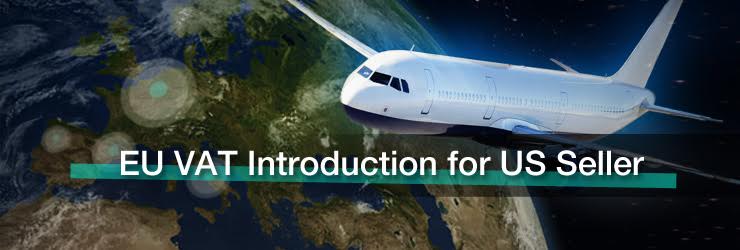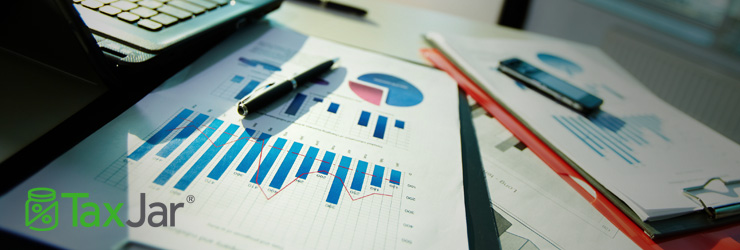EU VAT Introduction for Amazon US Sellers

For US sellers who are selling or preparing to sell in Amazon EU marketplaces, there is one thing you must pay close attention to — VAT. As it is one of the unavoidable part of doing business in Europe, let’s read on and become familiar with it.
What is VAT?
Value Added Tax (VAT), is a consumption tax assessed on the value added to goods and services. It applies to goods and services that are bought and sold for use or consumption and it is collected incrementally in every stage in the production chain. In other words, VAT is collected in every phase until the end customer pays the entire VAT. During this process, every participant collects VAT to the government and would also receive credit from them. To make it easier to understand, let’s take the production chain of muesli and 20% VAT rate as an example:
Stage 1: The farmer cultivates oat and sells it to a muesli manufacturer for €1. The VAT is €1 * 20% = €0.20. Hence, the muesli manufacturer pays €1.20 to the farmer while the farmer collect €0.20 VAT and send to the government.
Stage 2: The muesli manufacturer produces oat into a box of muesli and sell it to an Amazon merchant for €5. The VAT is €5 * 20% = €1 so the Amazon merchant buys a box of muesli for €6. The muesli manufacturer has to pay €1 VAT to the government and can also receive €0.20 credit from them, which means he only has to send €0.80 VAT to the government.
Stage 3: Finally, the Amazon merchant sells a box of muesli for €10 on Amazon and the VAT is €10 * 20% = €2. Therefore, when shoppers purchase it on Amazon, they pay €12. The Amazon merchant then send €2 – €1 = €1 VAT to the government.
In these three stages, the government receives €0.20 VAT from the farmer, €1 from the muesli manufacturer and €1 from the Amazon seller. In total, it is €2, which equals the VAT for the final price: €12.
What is the regulation of European Union VAT?
In European Union, each member states is obligated to adopt VAT. However, the actual rates applied vary between Member States, ranging from 17% in Luxembourg to 27% in Hungary. As for products that are imported from countries outside of the European Union, they need to comply with EU VAT regulation and apply the VAT rate of the member state where they are imported to. For example, if they are imported to Germany, then they should apply German’s VAT rate. To comply with EU VAT regulation, sellers have to register VAT number in the country where they import products to and pay VAT to the government.
In addition, in many European countries, customers would expect sellers to provide VAT invoices along with their orders. For instance, in Germany and Italy, buyers often request VAT invoices for high-valued items. In addition, if a customer makes a purchase on business expense, he/she will need a VAT invoice in order to claim back the VAT from the government.
How should US sellers comply with it?
First, to export goods to Europe, it’s imperative to apply for Economic Operator Registration and Identification Number (EORI), which provides identification of shipments across all EU countries. Otherwise, they won’t be able to complete the Entry Summary Declaration.
If you are shipping your inventory to the UK, your EORI numbers will start with the letters “GB”. If you have already registered VAT number in the UK, the first 9 digit numbers of your EORI will be the same as your VAT number and followed by 3 digit numbers, which usually are 000 [1].
Second, you must be VAT registered because if your company is not located in Europe, you could not take advantage of the VAT threshold. To register VAT number in the UK, you can simply process it online at: Register for HMRC taxes. Currently, the standard VAT rate in the UK is 20%. Once you have completed the VAT registration, you must collect VAT on all the sales you make no matter in which EU member states and submit VAT return to HMRC, usually every 3 months. You can submit it online at: Send VAT Return.
According to HMRC, the VAT Return should include the following:
-
your total sales and purchases
-
the amount of VAT you owe
-
the amount of VAT you can reclaim
-
what your VAT refund from HMRC is
If you only export your inventory to the UK, you only have to register VAT number in the UK. However, if you are also selling in other EU member states and your sales exceeds Distance Selling Threshold in any 12 consecutive months, you must register VAT number in these countries. Distance Selling Threshold is a value in Euros established by each country in the Europe Union. The exact thresholds also vary from each country. In Germany, the threshold is €10,000 while it is €35,000 in France, Spain and Italy.
Now you know all about the EU VAT! As for issuing VAT invoices, BQool can take care of the hassle of these tedious tasks. Check out EU VAT Invoice Generator to learn more about how our tool helps free up your time to focus on more important aspects of your business!
[1] Economic Operator Registration and identification scheme: supporting guidance https://www.gov.uk/guidance/economic-operator-registration-and-identification-scheme-supporting-guidance








